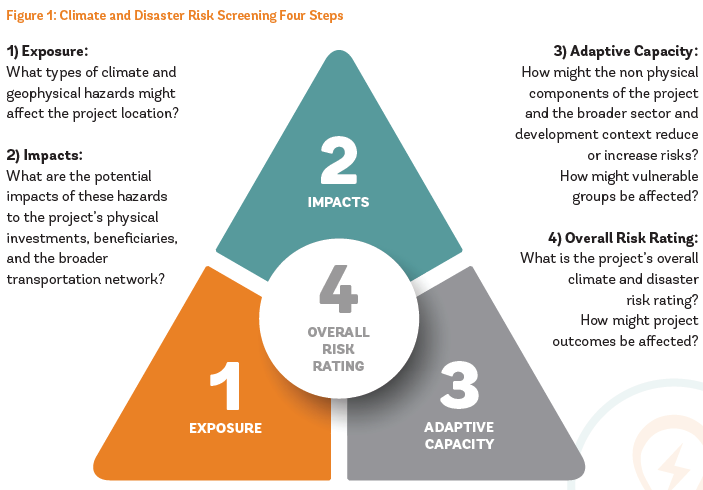Project teams are encouraged to screen their projects for risks from climate variability and change, as well as geophysical disasters at concept stage and update their screening as more project information/ details become available.
Climate and disaster risk screening can be carried out by simply:
-
Collecting basic project information such as the location of the project and its physical and non-physical components.
-
The Four Main Phases:
-
EXPOSURE – evaluate the extent to which the project location will be exposed to risks from climate change and geophysical disasters.
-
IMPACT – assess how these hazards may impact the project’s physical investments and beneficiaries. Start to consider risk mitigation measures.
-
ADAPTIVE CAPACITY – examine how a project’s non-physical components and the broader sector and development context may influence the level of risk posed to the project. Also consider impacts on vulnerable groups.
-
OVERALL RISK RATING – rate the overall risk from climate and geophysical hazards to the project outcome based on the previous considerations.
-



